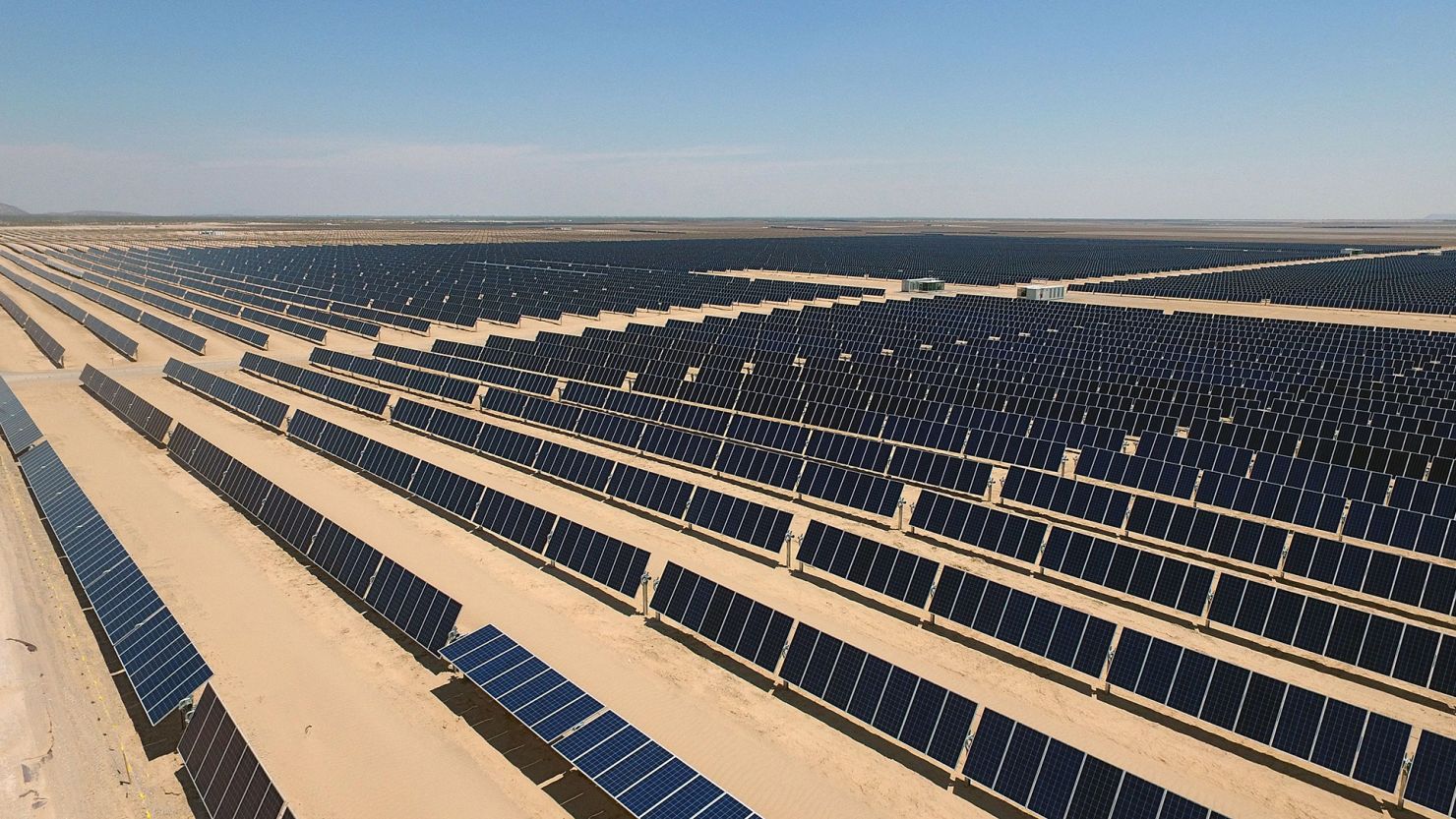By , , and , CNN

The world has passed a clean energy milestone, as a boom in wind and solar meant a record-breaking 30% of the world’s electricity was produced by renewables last year, new data shows.
The planet is reaching “a crucial turning point” toward clean energy, according to the Global Electricity Review published Wednesday by climate think tank Ember. It predicts global fossil fuel generation will fall slightly in 2024, before experiencing much bigger declines in subsequent years.
It’s a significant step toward the world reaching 60% renewable electricity by 2030, which is critical to meeting global climate goals, said Dave Jones, global insights director at Ember.
A look at the data reveals just how much the global power sector is changing.
Record-breaking renewables
In 2000, renewables made up less than 19% of the global energy mix. Now they make up more than 30%. Taking nuclear energy into account, the world generated almost 40% of its electricity from low-carbon sources last year.
The rise of renewables is also pushing fossil fuels into decline, slowing their growth by almost two-thirds over the past decade, the report found. Already, more than half of countries are five years past their peak in fossil fuel-generated electricity.
Fossil fuels’ share in the overall electricity mix has fallen from 64.7% in 2000 to 60.6% in 2023. Ember predicts this number will drop significantly in 2024, to 57.6%, as the rapid increase in solar starts to be felt.
“We’re going to get that boom in renewables, which will really change the picture very quickly,” Jones told CNN.
Booming solar
Solar was the fastest-growing source of electricity in 2023 for the 19th consecutive year, according to the report. It made up nearly twice as much new electricity generation as coal last year.
The surge of solar installations happened at the end of 2023, so the full effect is yet to be felt, said Jones. “I think that 2024 will bring a bit of a shock when you start seeing those numbers,” he said, especially among those who assume the demand for fossil fuels such as gas is going to just keep rising.
“The speed of solar and wind expansion is remarkable and a sign that society can bring about rapid change,” said Niklas Höhne, a climate scientist at the non-profit the NewClimate Institute, who was not involved in Ember’s research.
Renewable growth would have been even higher if it hadn’t been for significant drops in hydropower output due to drought in countries such as China and India, the report found. The shortfall was mostly filled by coal.
China leading the pack
China is far and away the leader on solar, accounting for nearly 36% of global generation last year.
Solar makes up more than 10% of annual electricity generation in 33 countries, according to the report, including Chile (30%), Australia (17%) and the Netherlands (17%) — and California, the world’s fifth-largest economy, generates 28% of its electricity from solar.
Electricity demand set to soar
Global electricity demand increased to a record high in 2023 — adding the equivalent of Canada’s entire electricity demand — but the rate of growth slowed compared to the average over the past decade.
China was the main driver of demand, while the United States and the European Union saw sharp falls amid milder weather and — particularly for the EU — a temporary slump in industrial activity.
Electricity demand is set to soar from 2024 onward, Ember’s analysis found. Electric vehicles, heat pumps and electrolysis — the process used to make green hydrogen, a much-hyped clean energy — will increase demand, alongside technologies such as air conditioning and artificial intelligence.
The spread of these technologies will increase the growth in electricity demand, but overall demand will decline as electrification is more efficient than fossil fuels, according to the report.
Overall, Ember’s report “does provide hope,” said Nancy Haegel, a research advisor at the National Renewable Energy Laboratory, who was not involved in the analysis. “It shows that we can generate significant amounts of electricity with renewable energy.”
The question is whether the pace of the transition will be fast enough, she told CNN. “Choices in the next 10 years are critical.”



You must be logged in to post a comment.